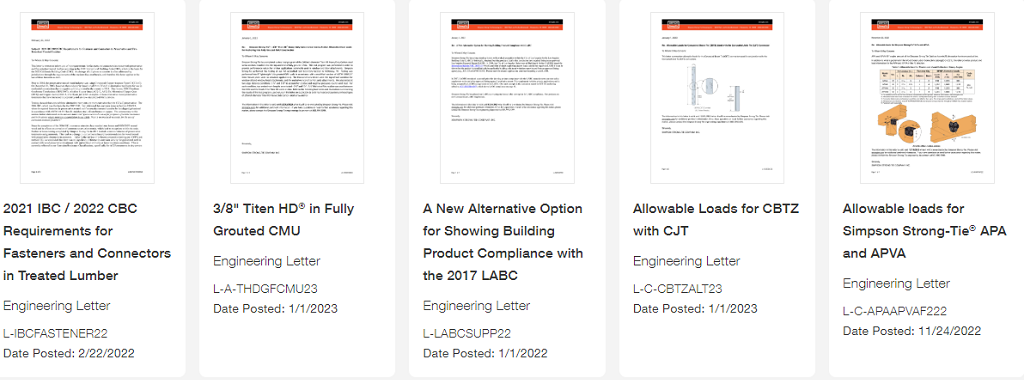Prior to joining Simpson Strong-Tie, I spent 13 years working as consulting structural engineer. As a specifier, I was amazed at the number of resources Simpson made available to me. From software, to blogs, to design guides, there were many resources to help me solve problems and streamline the design process. One resource that can sometimes be overlooked is the numerous engineering letters Simpson Strong-Tie engineers have authored to assist in the use of our products.
As a relatively new Simpson Strong-Tie employee, I’ve been doing a deep-dive to learn about all the tools and resources that we’ve created for the professionals who design or build structures with our products. Some of these were already very familiar to me, such as Anchor Designer™, and others I’m finding I wish I knew about in my designing days. Since I was used to specifying products the old-fashioned way (via the hard-copy catalogs), I didn’t visit the website much to search for product details or load tables. If I’d been to the website more, one resource I would have found that Simpson Strong-Tie regularly publishes, and updates, is our engineering letters.
Simpson Strong-Tie engineers create two different types of engineering letters: job-specific and generic. Job-specific letters are written to respond to a question from a specifier or customer pertaining to a specific job. The information in these letters is limited to the referenced job. Generic letters are written to address frequently asked questions or common installation issues that have been evaluated by Simpson Strong-Tie. The information in generic engineering letters is not limited to a specific job. Generic engineering letters are published on Strongtie.com, and they can be very helpful to specifiers and customers looking to solve general or recurring problems.
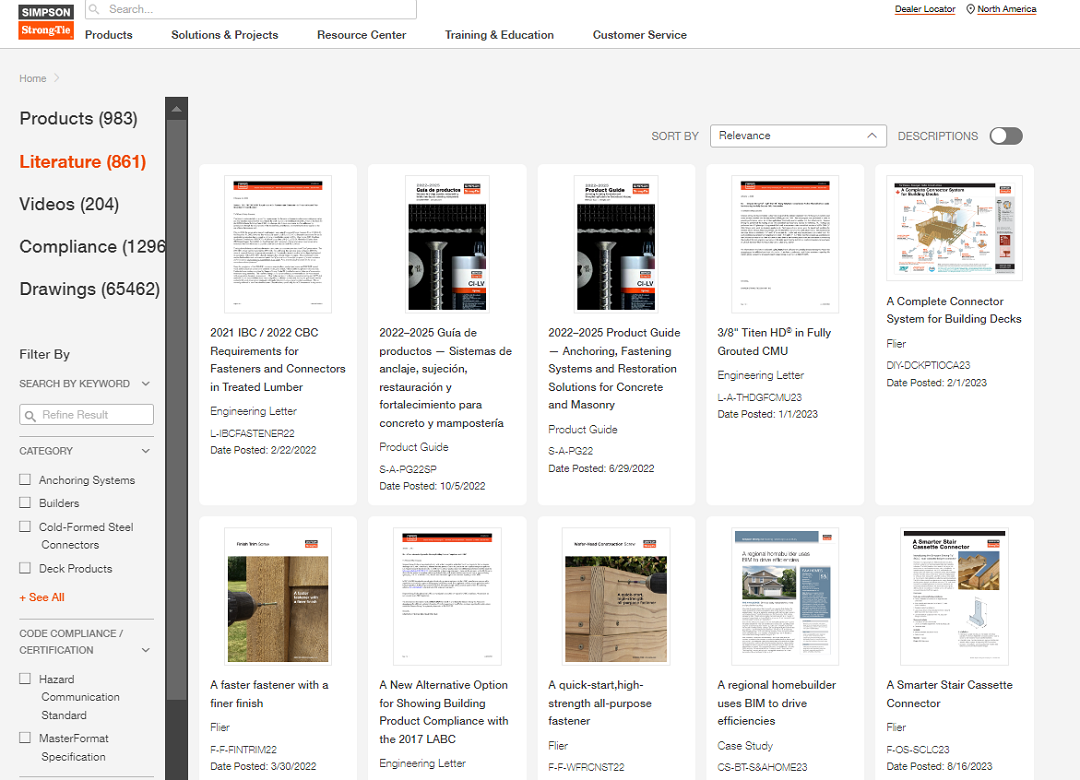
The engineering letters posted on our website can be located in several ways. Under Resource Center -> PDF Literature & Catalogs, you can find them by filtering by type on the sidebar. You can home in on a specific subset of engineering letters by choosing one or more of the seventeen different categories.
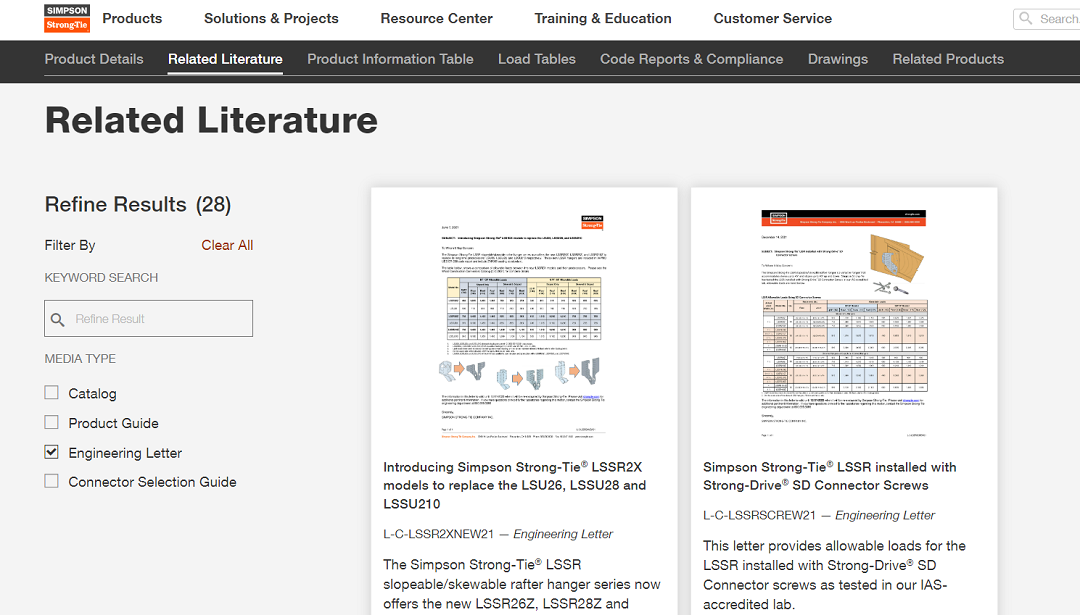
Another way to find engineering letters is to go directly to the product webpage. By clicking on the “Related Literature” link, you can select “Engineering Letter” from the different media types available. Choosing this option will show the available generic engineering letters that Simpson Strong-Tie engineers have written related to that product.
OK, so the moment we’ve all been waiting for…what are Simpson Strong-Tie’s most popular engineering letters? In other words, which ones are being downloaded the most often?
No. 5: Prescriptive spacing for the BVLZ:
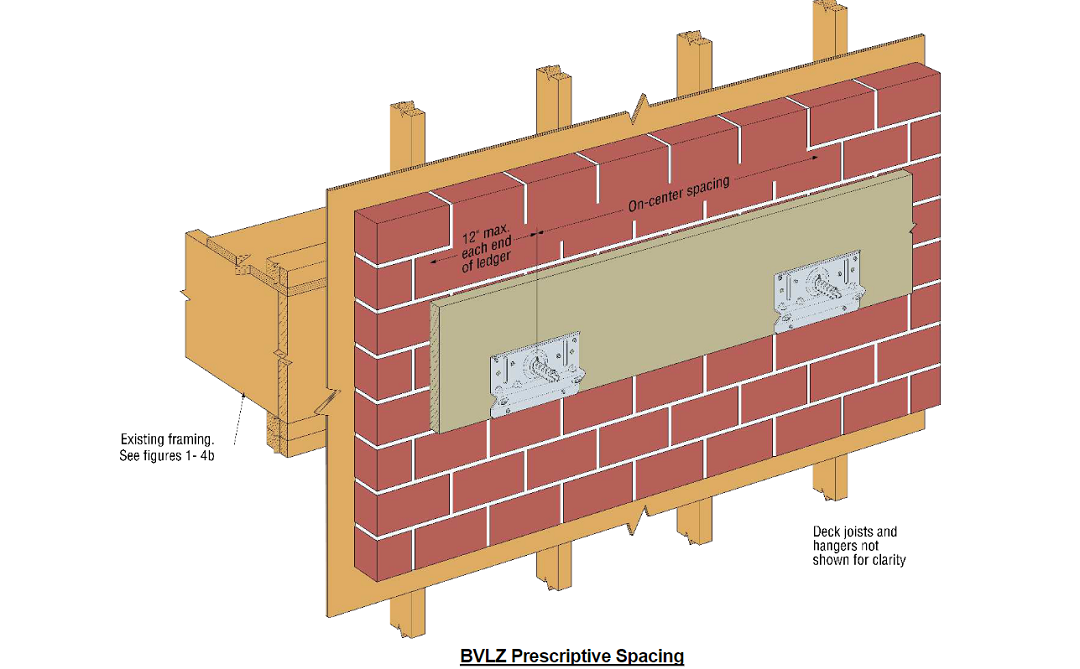
The innovative BVLZ brick veneer ledger connector provides a code-compliant tested solution for adding a deck to an existing house that has a brick veneer exterior. With the BVLZ, the deck ledger can be attached to the rim joist through the existing veneer. This engineering letter has several tables with different prescriptive spacing requirements for installing the BVLZ to meet IRC requirements based on various framing or wall sheathing configurations. Find the engineering letter here.
No. 4: Introducing Simpson Strong-Tie H1A Hurricane Tie as a Replacement for H1:
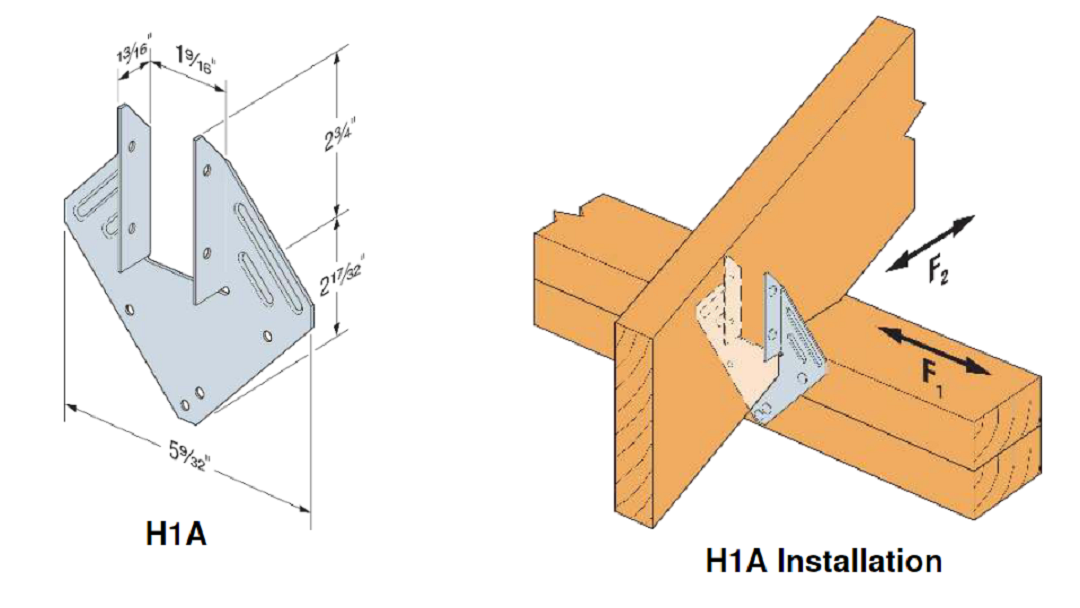
In July 2023, Simpson Strong-Tie discontinued the popular H1 Hurricane Tie and replaced it with the new H1A. By repositioning the fastener locations in the new model, Simpson Strong-Tie engineers were able to increase the uplift capacity of this connector while at the same time reducing by two the number of fasteners into the truss/rafter. To simplify the specification process, this helpful engineering letter directly compares the allowable loads of the new H1A truss/rafter tie to the previous H1 truss/rafter tie. Download this engineering letter here.
No. 3: Simpson Strong-Tie Holdowns on Cross-Laminated Timber Panels:
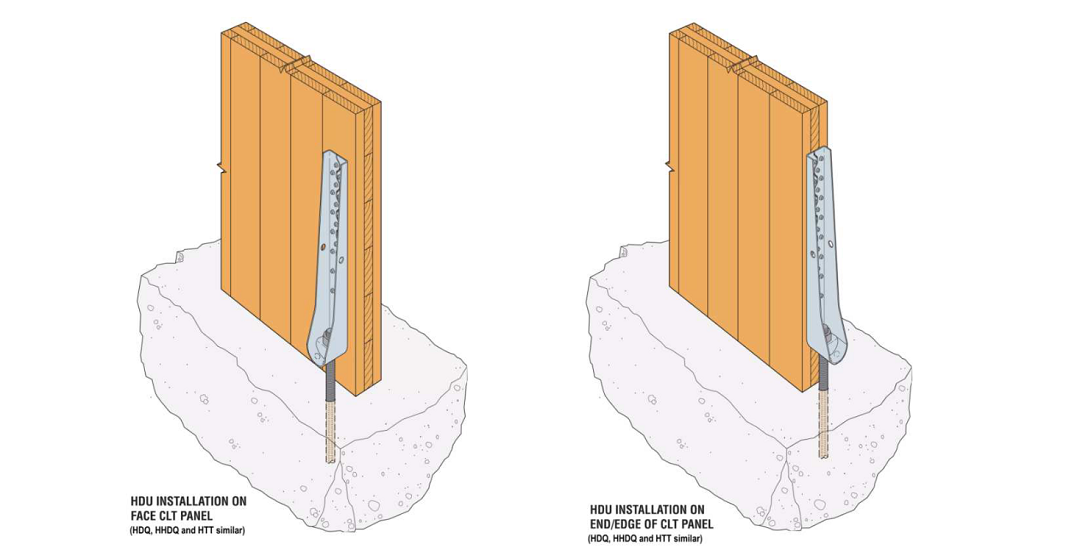
With the increase in popularity of mass timber generally and cross-laminated timber construction in particular, Simpson Strong-Tie has quite a few product options to support that market. However, this engineering letter provides CLT-to-concrete allowable loads for some of our holdowns that were originally designed for use with sawn lumber and other engineered wood products. Allowable tension loads are included for the HDQ, HHDQ, HDU, and HTT in two different holdown-to-CLT panel configurations. Discover this engineering letter here.
No. 2: Simpson Strong-Tie Connectors for Cross-Laminated Timber Construction: 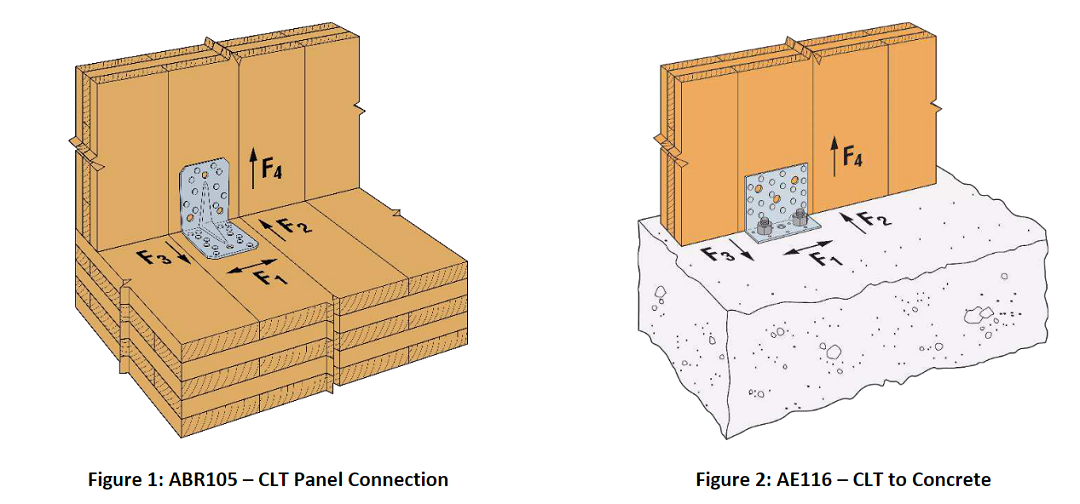
With the increase in popularity of mass timber and cross-laminated timber construction in particular, Simpson Strong-Tie has quite a few product options to cover that market. Further illustrating the growing popularity of CLT construction, our second most frequently downloaded engineering letter was created to provide specifiers with additional CLT-panel-to-panel and CLT- panel-to-concrete allowable loads for the ABR9020, ABR105, AE116, ABR255, and the E20/3. The allowable loads are for fastener and anchorage options not currently covered in our Mass Timber Construction guide. These heavy-duty angles transfer both in-plane and out-of-plane shear loads as well as resisting tension/uplift. Read this engineering letter here.
No. 1: Introducing Simpson Strong-Tie LSSR2X models to replace the LSU26, LSSU28, and LSSU210:

And finally, the most downloaded engineer letter is the LSSR2X replacement letter. Authored by Simpson Strong-Tie engineers in 2021, it introduced us to the LSSR slopeable/skewable rafter hangers that replaced their long-time predecessors: the LSU26, LSS28, and LSSU210. The patent-pending, innovative hinged swivel seat on the LSSR easily adjusts up or down from 0 to 45 degrees, and the flange design allows for a skew from 0 to 45 degrees. Another key feature of the LSSR connector series is that it can be installed after the rafter has been tacked into place. To make it as easy as possible for customers and designers to specify the new product ,the letter compares the allowable loads of the new hangers to those of the previous version. View this engineering letter here.
Bonus: Reinforcement for LUS Joist Hangers Using Strong-Drive® SDWC TRUSS Screws:
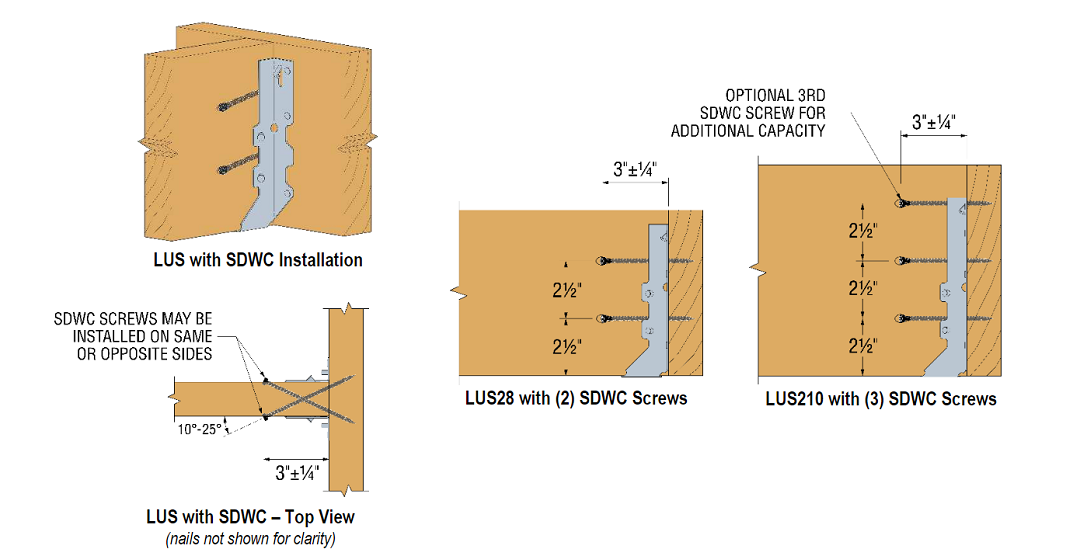
It’s worth mentioning this engineering letter that provides a handy fix for a misinstalled LUS joist hanger. LUS joist hangers require 3” long common joist nails to achieve the published load capacities. Simpson Strong-Tie does not recommend the use of 0.148” x 1½” long nails into the double shear nail dome due to their lack of penetration into the header. Simpson Strong-Tie engineers have therefore tested and evaluated a reinforced connection that uses 4½” Strong-Drive SDWC Truss screws driven through the joist into the header, providing adjustment factors to the published LUS allowable loads. Read more about this engineering letter here.

In addition to engineering letters, other literature that Simpson Strong-Tie publishes on the website includes fliers and brochures, technical and material safety data sheets, product guides, technical bulletins, installation guides, and, of course, catalogs. Not to mention all the other resources such as code reports, CAD, Revit, and PDF drawings and families, installation videos, links to our software and web applications, and our training and education portal. So invest some time on Strongtie.com when you get the chance, because you never know what you may find there to help you solve your next problem.



